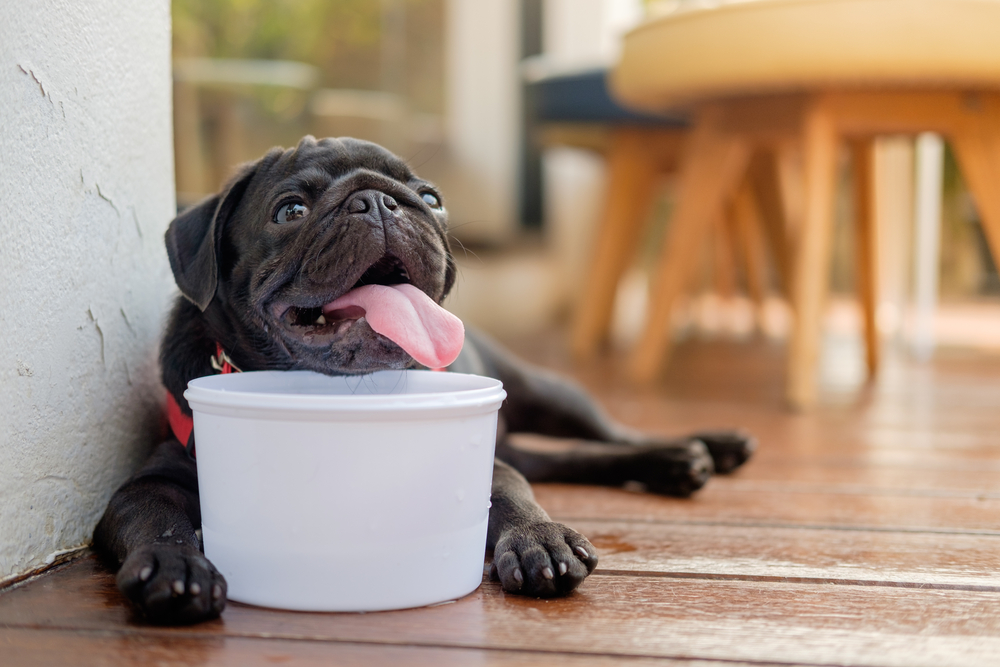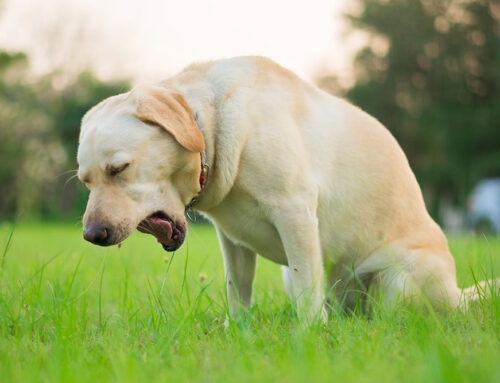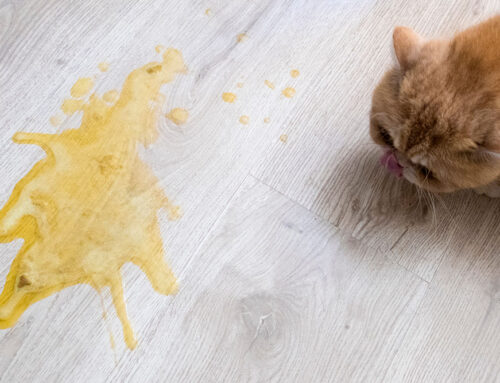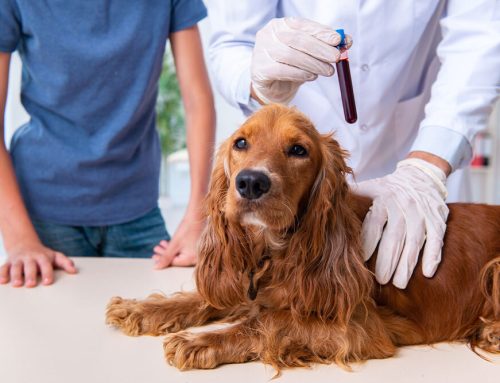As summer heats up, is your pet keeping cool? Discover the best ways to help your pet chill out by following our Palisades Veterinary Hospital team’s summer safety tips.
Water, water everywhere—ensure your pet has access to fresh water
Pets rely on panting to dissipate excess body heat and maintain a safe internal temperature. But, like sweating, panting creates fluid loss that can lead to dehydration if drinking water is not readily available. Dehydration can affect the blood’s ability to transport oxygen, slow nutrient absorption, slow muscle and nerve function, and in severe cases, lead to kidney failure and death.
Help your pet avoid dehydration by always making fresh cool water available. When you and your pet spend time outdoors, ensure they take plenty of water breaks. Continually refresh your pet’s water bowl to keep the water fresh, cool, and clean, and to slow the water’s evaporation rate, place the bowl in the shade. In addition, use a plastic or ceramic bowl to minimize the bowl’s heat conduction.
Throwin’ shade—block the sun with these pet products
On a hot summer day, a shady spot can have an air temperature several degrees cooler than a sunny area. Unfortunately, some yards and patios offer little or no natural shade, and once-shady areas may no longer be available as the sun moves across the sky. Create your pet’s reliably shady spot by using these handy must-have items:
- Shade cloth — Mesh shade cloths reflect the sun while allowing air flow, and you can hang them anywhere in minutes. Look for aluminized fiber mesh for maximum ultraviolet light (UV) reflection.
- Cabana pet bed — Some pet beds have an overhead canopy that provides shade, and elevation offers cooling air flow.
- Pop-up tent — If you are car camping or tailgating, a pop-up tent gives instant portable shade.
- Reflective dog jacket — For pups who refuse to stay in the shade, try a mesh reflective jacket designed from aluminum shade cloth.
While these items can provide your pet with some cooling relief, you should always join your pet outdoors when the weather is warm. Because your pet can become dangerously overheated in a short time, you need to watch them closely to provide immediate care if they begin showing heatstroke signs.
Recognize heatstroke signs in pets
Heatstroke is one of your pet’s greatest summer health and safety risks. This potentially deadly—but preventable—condition occurs when your pet’s internal body temperature exceeds their ability to keep cool (i.e., 104 to 109 degrees). Because pets have few sweat glands, they rely on panting to expel exhaled warm air, and cool inhaled air before it reaches the lungs. In extreme temperatures and humidity, panting becomes ineffective, and your pet’s body temperature can skyrocket.
While all pets can suffer from heatstroke, certain types are especially vulnerable, including:
- Flat-faced (i.e., brachycephalic) pets such as bulldogs and pugs
- Senior pets
- Young pets
- Overweight pets
- Weak pets
- Disabled pets
The best way to help your pet avoid heatstroke is to keep them in your air-conditioned home during warm weather. If you must be outside with your pet, monitor them for heat-stress related signs, including:
- Heavy panting
- Drooling
- Excessive thirst
- High heart rate
- High breathing rate
- Dull or stuporous attitude
- Lethargy
As pets’ heat-related distress increases, signs intensify to include:
- Vomiting
- Diarrhea
- Discolored gums (e.g., bright red, grey, or white)
- Unsteady or staggering gait
- Collapse
- Seizures
- Coma
- Death
If your pet displays heatstroke signs, immediately bring them to a cool area, and offer fresh water to drink. Severely affected pets may benefit from a cool—not cold—water bath, but monitor your pet closely for changes in mental status (i.e., loss of consciousness or seizure). If your pet experiences severe signs, contact Palisades Veterinary Hospital for further instructions.
Step out safely—pet paw protection
Most of us know the joke about the sizzling summer sidewalk being hot enough to fry an egg, but few of us think twice about our dog’s paw pads touching the same scorching surface. Cement, brick, and asphalt can absorb and retain an immense amount of heat, which is often 40 to 50 degrees higher than the air temperature. Keep in mind that because your dog’s paw pads are well insulated, they may not react in pain during a walk, but burns often appear later as their pads become visibly red, swollen, and blistered.
Protect your dog’s paw pads by limiting outdoor activities to the early morning and late evening, when the sun is less intense—this will also reduce their heatstroke risk. Before you allow your dog to walk on a hot surface, test the pavement with your hand. If you are unable to keep your hand in place for seven seconds, the surface is too hot for your dog’s paw pads. Stay on the grass, or put your dog in a pair of rubber-soled boots.
Safety in numbers—never leave your pet unattended in a vehicle

While you may be tempted to take your pet on every summer adventure, never leave your pet unattended—especially in a parked vehicle. The vehicle’s interior temperature can climb 20 degrees in as few as 10 minutes—the time a quick errand can take, putting your pet in grave danger—whether or not the windows are cracked open or the vehicle is parked in the shade.
If your pet is unwelcome at your destination, leave them safe at home in the cool air conditioning. If your pet is riding with you alone in your vehicle, postpone quick errands and pit stops unless the business offers a drive-through or curbside-pickup option.
If you notice an unattended pet inside a parked car, notify local law enforcement.
Do not allow the summer heat to put a damper on outdoor plans with your pet, but do take proper precautions to keep your four-legged friend cool and safe. For additional summer safety tips, check out our blog or contact our Palisades Veterinary Hospital team. Stay cool, friends!








Leave A Comment